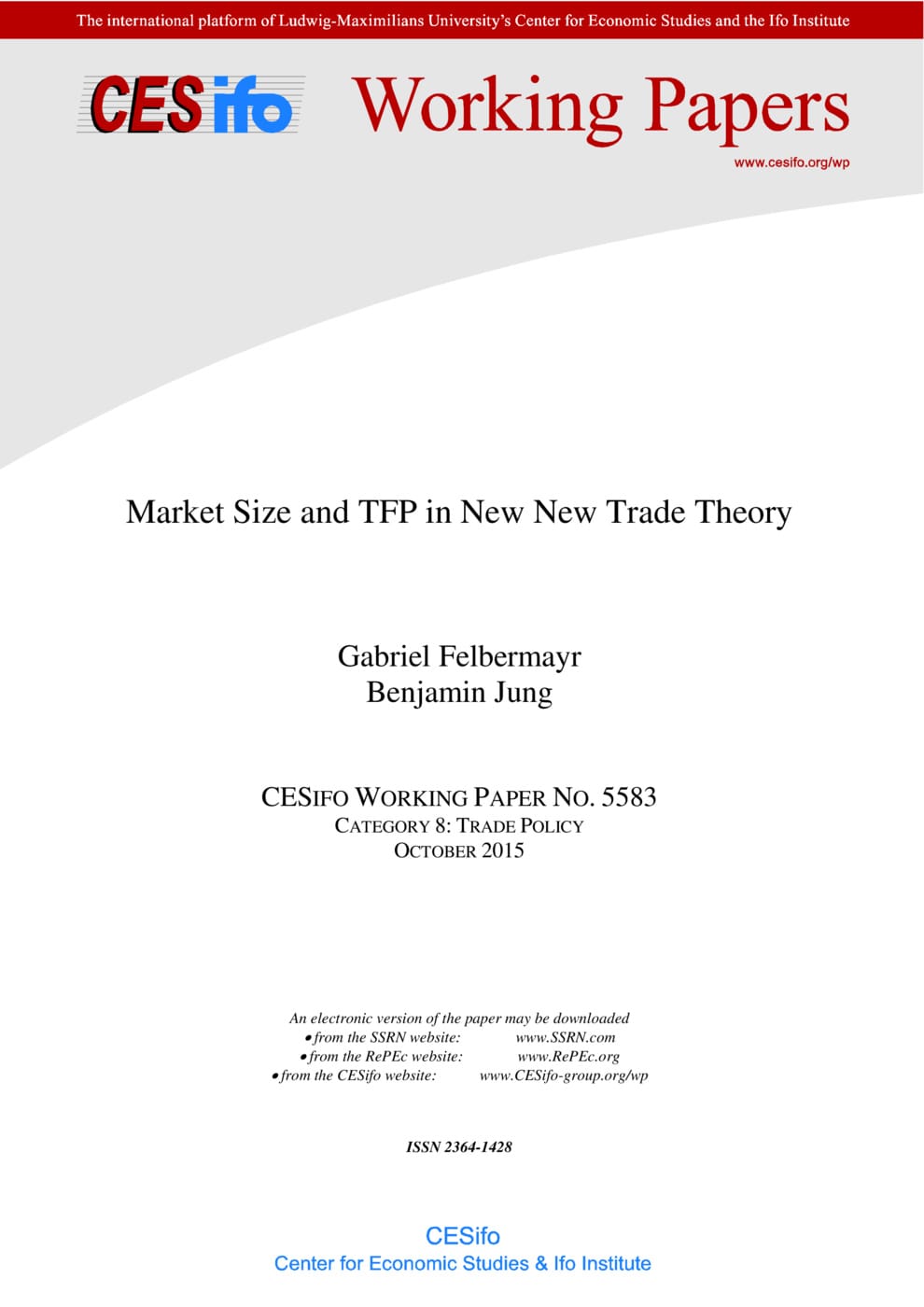Market Size and TFP in New New Trade Theory
CESifo, Munich, 2015
CESifo Working Paper No. 5583

Recent trade theory in the Krugman (1980) tradition predicts that countries with larger market size enjoy higher levels of total factor productivity (TFP) – and equivalently of real per capita income or welfare – as a smaller fraction of spending on inputs is affected by trade costs. However, in cross-country data, there is no such positive correlation between market size and TFP. We argue that models with heterogeneous firms and selection help to reconcile theory and data. While they do feature a home market effect – larger countries have an over-proportionate share of firms – and, therefore, have more input varieties available, the average productivity of firms is lower as greater market size protects inefficient firms. To reconcile theory with data, we show that a lower degree of external economies of scale (EoS) is needed than what is implicitly assumed in the usual formulation of aggregate CES production functions. Whether trade liberalization triggers convergence or divergence of TFP also depends on the strength of EoS.
Trade Policy